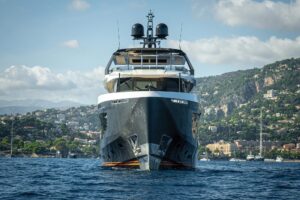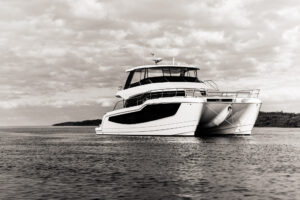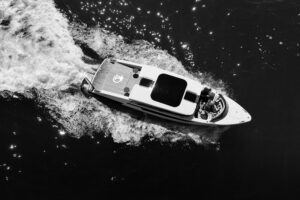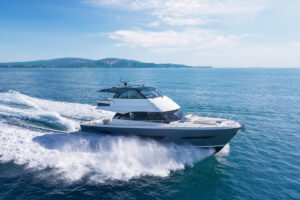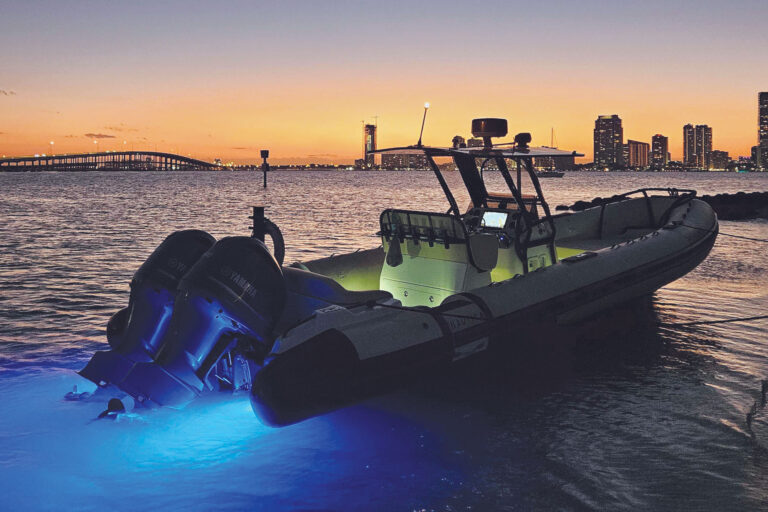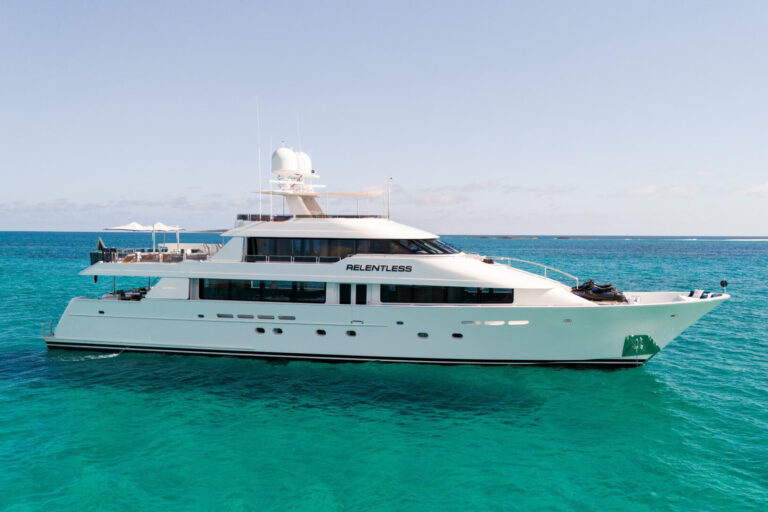
The future of yachting was on my mind the other day as I watched SpaceX’s Falcon Heavy rocket blast into space with a Tesla on top. That same morning, I received an email from my pal and yacht designer Dave Martin. During the past 50 years, Martin has designed more yachts than anyone I know, and he’s still noodling new ones. His mind was on the future too. These are exciting times.
Attached to his note were preliminary drawings and specifications for his latest vision: the 30-foot Flying Fisherman. The idea for the design occurred to him at a marina.
“Walking the docks, I’m seeing more and more big center consoles with three or four huge outboards strapped to their sterns,” he said. “I wondered why anybody would spend more than half a million bucks for a fast boat with little more than an outhouse stuffed under the console.
“My son explained it to me,” Martin continued. “The modern yachtsman simply has no time to hang around the marina and sleep on a boat. Their time is too valuable. Those that want to catch fish need to do it quickly.”
Martin reasoned that a flying boat would be the logical solution to being time-broke.
“The busy New York hedge fund manager could take his private elevator to the roof of his skyscraper and cast off for the Hudson Canyon,” he said. “During the hour flight, he could stay on top of the market by laptop. When a school of fish appeared, he could drop down and deploy the baits.”
Martin said boats taking to wing were nothing new.
“Years ago, professor Dan Savitsky of the Stevens Institute of Technology told me that the Coast Guard had given up landing helicopters on the water because the high center of gravity of the rotor and engine caused stability problems at sea,” Martin said. He solved this problem on the Flying Fisherman with a hull design that is a cross between a trimaran and Ray Hunt’s original 13-foot Boston Whaler.
The vessel’s center hull would house twin 400 hp outboard powerheads connected to gear boxes and shafts that drive four ducted rotors. Steering would be controlled hydraulically with deflectors fitted to the ducts. Martin’s research suggests that the arrangement could develop as much as 7,200 pounds of lift, and that flying just above the water in ground-effect mode could save fuel and time.
“No need to wait for bridge tenders,” he says. “Just goose the throttle and hop over ’em!”
I believe Martin’s design is just the beginning. Recently, a Chinese company launched a prototype of a mega-drone designed to carry passengers who are too busy to drive. Why, then, can we not create a mega-yacht drone for yachtsmen who are too busy to yacht?
Imagine the advantages: No need to adopt a crew or grease greedy dockmasters. No need for stabilizers to soothe the queasy, salt-free yachtsman. If you’re just too busy to bother, the mega-yacht drone could do the yachting for you and send the video back.
Now if we could just build a rocket and send one to Mars… well that would really be something!

